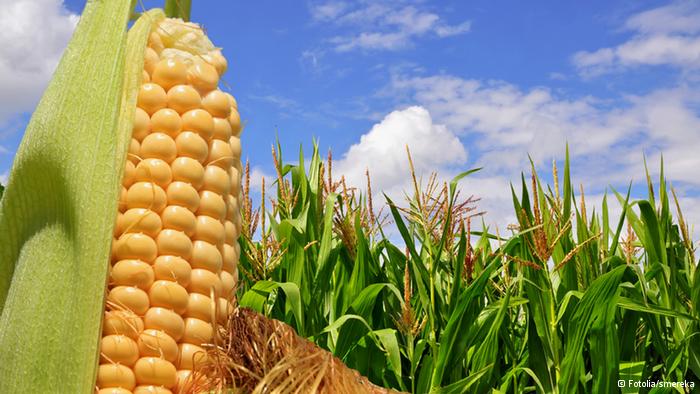Europe inched closer to the cultivation of a new breed of genetically modified corn. The move comes after more than a decade of debate and considerable opposition from environmentalists.

The European Commission presented EU member states with a proposal for the cultivation of a new breed of genetically modified (GM) corn on Wednesday. Unless a majority of EU governments reject the proposal, approval for the planting of maize 1507 will be granted within the year.
The corn variety 1507 was developed by Pioneer DuPont and applications for EU approval were submitted in 2001. The Commission passed it from committee to committee without reaching a clear decision, finally prompting DuPoint to file an official complaint. In September, Europe’s second highest court found the Commission guilty of breaching EU law and delaying the decision-making process on insect-resistant maize.
Insect-resistant corn
Corn 1507 is both insect resistant and herbicide tolerant. The crop produces a pesticide toxin and is able to withstand intensive spraying with an herbicide known as glufosinate ammonium. According to DuPont’s communication manager Jozsef Mate, this genetically modified crop is the key to securing larger annual yields.
The product represents a solution in countries where insects are a problem for farmers, like in Spain, Mate told DW. The loss for the farmers can be very severe. There are fields where 100 percent of the crop was destroyed by corn borer.
He added that the modified corn had been through seven safety reviews by the European Food Safety Authority (EFSA). All of them are positive and say that the product is safe and doesn’t represent any problems for humans, animals or the environment, Mate said.
Greenpeace: no scientific consensus
But environment advocacy group Greenpeace called the EFSA assessment woefully inadequate and accused its expert committee of failing to acknowledge uncertainty in the data. Greenpeace EU agriculture policy director Marco Contiero told DW that there remains no scientific consensus on the safety of genetically modified crops.
The technology is prone to have an unintended and unpredictable impact, he said. Because the technology behind it is crude. We know how to randomly insert up to four genes into the genome of a plant, but we don’t know how they’re going to impact the genome of that plant.
Contiero said genetic modification can result in the development of pieces of DNA within the genome that have no clear, known purpose. He said there is insufficient data available about how these portions of the genome – sometimes called junk DNA – may affect the plants and the humans who eat them.
We simply know too little about possible effects, Contiero said. There has been no study on impacts of GM crops on human beings, whether they are short term, middle term or long term impacts.
Farmers divided
The introduction of corn 1507 has faced sharp opposition from France, Austria and Poland, but is quickly gaining support in Britain, Spain and Sweden. According to a survey conducted by Farmers Weekly earlier this year, more than 60 percent of British farmers would grow GM crops if it were legal to do so.
Currently GM crops are safety tested more than any other crops, Sian Davis, an adviser with the National Farmers Union of the United Kingdom, told DW. If farmers in Spain or Portugal want to grow crops then the only answer they have is to use a GM variety.





